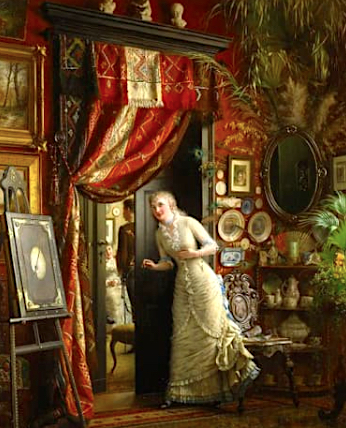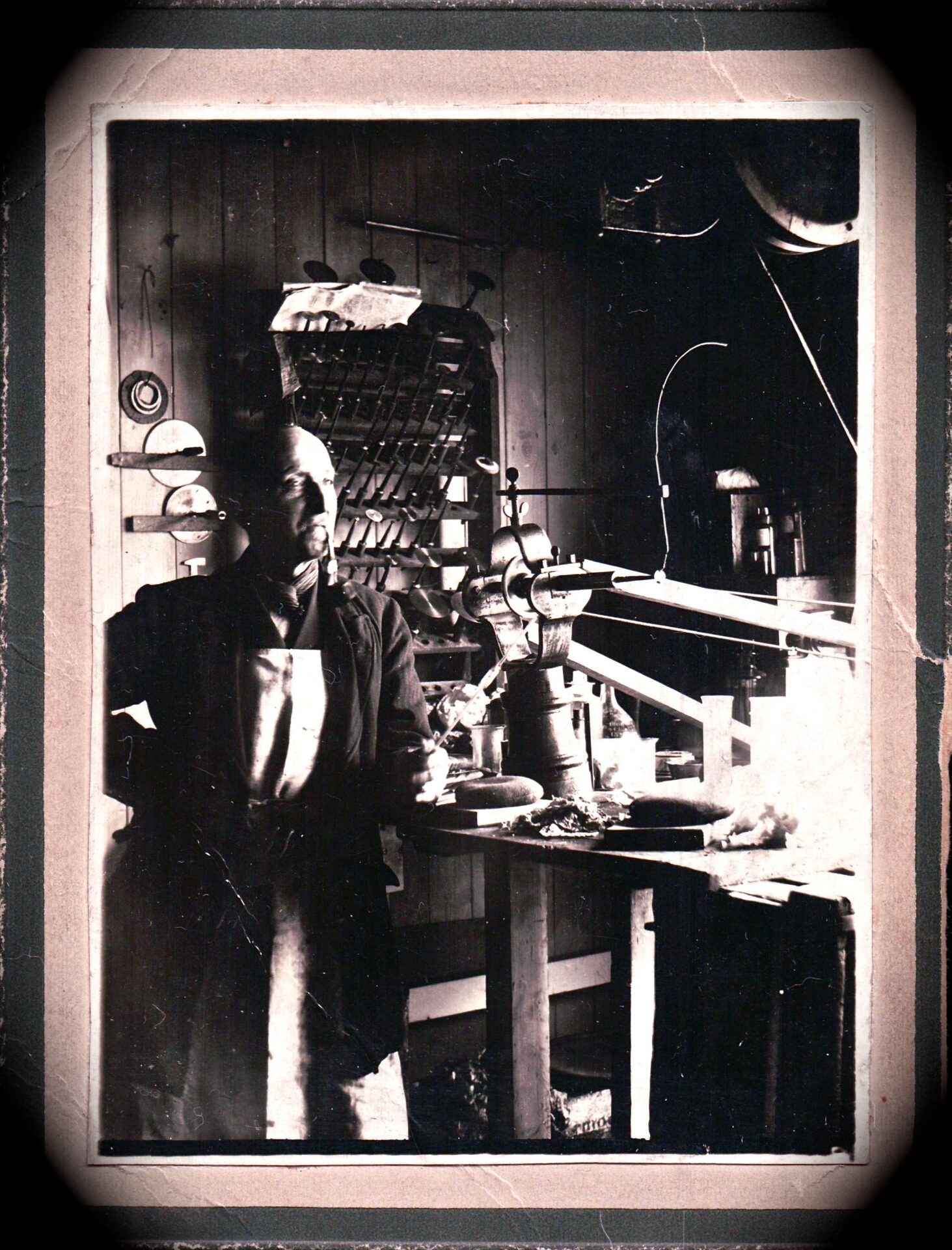
For any artisan who wished to earn a living in modern times, the nineteenth century was a golden age. In Europe, the British Isles and America, the life-chances of the middle and lower classes were gradually improving and their pockets might often have one or two pennies left over at the end of the week to spend on small domestic comforts. Even a poor miner might have a modest pair of decorative china dogs on his mantlepiece, while a banker’s wife would be sure to fill her drawing room with every conceivable item, in the latest fashion, in order to impress guests. Furniture, walls, furnishings, silver, glass . . . all these and more were embellished, coloured, carved, stitched, or painted, as much as the medium permitted, occasionally to the point of tastelessness.
There was money to be made if you had a steady hand and an artistic eye.
Emanuel Hauptmann (1848-1924), a Bohemian-born glass engraver who moved to Britain as a young man, was a skilled man. He arrived as part of a wave of Bohemian glass artisans who migrated into Scotland, England and Ireland in the early to mid-nineteenth century to take advantage of the Victorian love of ornament – in their case, the British craze at that time for Bohemian-style glass. Most of them spread out across the country, settling in areas where glass was being made, going no further.

But Emanuel Hauptmann was restless. It is true that he married an English woman and that their children were all born in the north-east of England. He even died and was buried in England. But in 1881 he undertook an extraordinary adventure which affected him deeply, and which changed the methods and styles of glass decoration in a country thousands of miles away. He went to work for a short time in Japan.
This year I wrote an article about Emanuel Hauptmann in response to Japanese interest in him. You can read or download it in English or Japanese, through the links below.
Also you can learn more about the Japanese glassworks at which Emanuel worked in the previous post.
This website honours the lives and work of all our ancestors who made things that were beautiful or useful, whether by craft or manufacture. Who Made That Glass invites you to learn about more of these people here, and to get in touch if you have any questions or similar stories you would like to share.